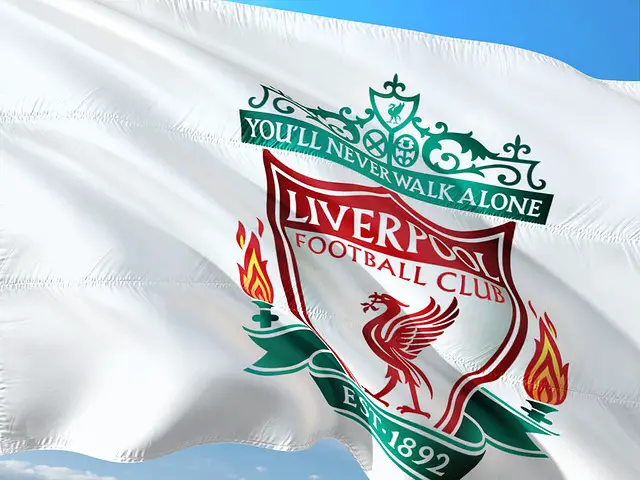There is a simple fact in soccer: a good quality ball makes a difference between a good training session or a good match.
Nobody wants to play the BEAUTIFUL GAME with a deflated, worn-down soccer ball.

In terms of practicality, the colors, patterns and designs of soccer balls are less important.
However, many soccer fanatics, myself included, would say the traditional soccer ball is black and white.
When I was a young child, my favorite things to draw were soccer-related: a goal, a stadium, a player taking a penalty.
All had one common element: the black and white soccer ball.
But why was it always black and white?
Why Black and White? The Telstar Soccer Ball
While black and white balls may have existed before the 1970 World Cup in Mexico, Adidas brought the black and white soccer ball to a worldwide audience.
The Adidas Telstar was the official ball for the 1970 World Cup.
Adidas created the Telstar with one main aim in mind: to make it clear for viewers to see on black-and-white television screens.
In the past, soccer spectators struggled to see the old maroon, brown-colored soccer balls on television, leading to confusion about which team had possession.
The black and white design of the Telstar made FOLLOWING THE BALL EASIER.
It was a huge success. Not only did Telstar MORDENIZE the viewing experience, but it was the first soccer ball that gained worldwide notoriety.
Still, today fans, players, and soccer enthusiasts from different generations will recognize the iconic black and white patterned Telstar soccer ball.
Its legacy has been long-lasting.
Different variations of the black and white Telstar have been used at many World Cup tournaments since 1970.
The most recent saw a rejuvenated Telstar (the Telstar 18) used at the 2018 Russia World Cup.

Pigs Bladders and Stitched Hexagons: Evolution of the Soccer Ball
The Telstar was not a sudden revelation. It was the by-product of centuries of soccer ball invention, tinkering and development.
Instead of the synthetic sphere used today, animal bladders, stitched cloth or even human heads would be used in the past.
In Medieval England, the first evolution of the soccer ball took place.
Players covered the inflated animal bladder in leather to improve the longevity and shape of the ball.
Over time, soccer ball designs adapted to the popularity of the sport.
Firstly, American engineer Charles Goodyear changed the soccer ball in 1855 when he invented vulcanized rubber, which was used to make soccer balls of standardized size.
In 1862, British leathermaker H.J. Lindon improved the ball ONCE AGAIN.
He created the inflatable rubber ball that kept its shape and was more lightweight than Goodyear’s previous invention.
Both inventors played a significant role in developing the standardised soccer ball, still used today.
In 1872, the FA introduced official rules for soccer that included a universal size of a soccer ball.
The rules stated that the ball “must be spherical with a circumference of 27 to 28 inches”, measurements that are still used under FIFA Laws.
Further Soccer Ball Development
In the 20th century, further developments were made.
However, a new challenge arose in the 1930s: the viewership of soccer on television.
Often, dark or leather materials were used to make soccer balls in the early 20th century.
Problems occurred when viewers tried to spot the ball on TV.
The brown-maroon colors of the ball were nearly impossible to view against black and white TV and the mud of the pitch.
The creation of the first white soccer ball in 1951 slightly rectified this problem.
But viewers would have to wait another 20 years for the best soccer viewing experience on black and white TV.
Modern Soccer Balls
Soccer balls have adapted along with modern technology in the past 50 years.
Each year, national and international football associations, including UEFA and FIFA, change soccer balls based on the latest technological advancements to make the game more exciting.
This often relates to the color and design too.
Modern soccer balls change so frequently that many have few similarities compared to the first black and white ball.
Multiple colors and patterns are often used. Now, TV viewers do not need to be considered as they were back in 1970.
All soccer balls are now easily seen in high-definition, or even 3D, television screens.
Final Verdict
Soccer balls are traditionally seen as black and white.
However, in soccer history, this is only a recent development.
The need for a better viewing experience for fans revolutionized the soccer ball, and the 1970 World Cup Adidas Telstar ball marked a new era of soccer balls.
From 1970 onwards, soccer fans have linked the black and white ball to the sport.
More recently, designs and colors have gone beyond this and soccer players, coaches, fans, and enthusiasts have more soccer ball options available to choose from THAN EVER BEFORE.
 Alex Waite
Alex Waite


